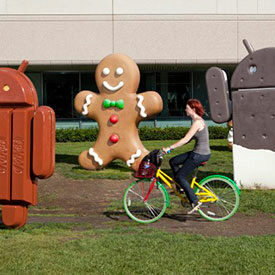Like any good teenager, Google is growing with the times. The end of September marked two important milestones for the technology powerhouse. First, the company, founded in a Menlo Park, Calif., garage in September 1998 by Larry Page and Sergey Brin, celebrated 15 years in business. At the same time, the company introduced its new Hummingbird search algorithm, making the all-powerful Google search engine better able to deal with the longer, more complex queries it has been getting from web users.
Keeping pace with Internet usage is but one of the challenging tasks engaging the more than 8,000 employees working at Googleplex, the Mountain View, Calif., headquarters of the multinational corporation that specializes in Internet-related products and services. Spencer Pearlman, a senior at Cooper City High School in Cooper City, Fl., had heard the rumors of Google’s relaxed yet vibrant corporate culture, and this summer he got the chance to experience it. As a student in Wharton’s Leadership in the Business World program, Pearlman spent a day on the Googleplex campus, talking with company execs and breathing in the innovation. In this essay, Pearlman recaps his visit to one of the world’s most high profile and successful businesses.
I didn’t quite know what to expect when I heard we would be going to Google. Google is placed on a pedestal as the king of technology companies, and I am not a true techie. Even more than its all-powerful search engine, the company has created an e-mail server, revolutionized advertising and generated its own web browser. Although interested in business, I’m by no means an expert in search-engine strategies. Nonetheless, I was curious to visit Google, the company that has been voted time and again as one of the happiest places to work.
Volleyball and Sleeping Pods
A circular-shaped bicycle propelled by seven people whizzed by as we pulled into the Googleplex parking lot. At any other company, this would be out of the ordinary, but here it was just the company carpool – Google-style. Employees rode around on brightly colored Google bicycles, played volleyball on the company beach volleyball court and slept in their own Google sleeping pods. Within the first 10 minutes, I was a believer in this brand of work ethic.
The company’s philosophy is to let people run their work lives, not to have work run their lives – a relaxed, non-corporate approach that Google says fosters free thinking and creativity. Located in the heart of California’s Silicon Valley, Google incorporates the popular “Valley” viewpoint shared by other tech startups and established Internet companies, that open space directly correlates to the comfort and openness among its employees, stimulating productivity. The end goal: to create innovators who can make an impact on the world.
As our visit kicked into gear, Patrick Glover, the associate product marketing manager, led us into the main Google dining center for lunch. Walking into the center was like entering a vast concert hall set up with an all-you-can-eat lunch buffet. Employees at the Googleplex have access to several cafes offering free gourmet breakfast, lunch and dinner. Google believes that meals fuel strong thinkers and build valuable relationships.
After lunch, we were led into the lecture hall where a panel of six employees offered insights into the operations at Google – surprisingly not about technology, but instead about marketing. Marketing and branding are critical to the company’s success. Without them, Google would not have become a household name. The Associate Product Manager Program (APM) is the main marketing division within Google, which aims to bring innovative Google technology to market. After Glover spoke about the APM division, I viewed Google as more than just a technology firm; it’s also a major player in the advertising and marketing arena.
The APM program is where Google stands out among other companies in Silicon Valley. As part of this initiative, Google sends each APM team on a trip to a foreign city — Istanbul, Jakarta, Tokyo — with a specific product to market. The point is to train its employees to develop a product vision and strategy.
‘Do Cool Things that Matter’
Visiting Google showed me that business is so much more than just finance and capital investment. Image, brand distribution, product placement and the strategy of moving goods from producer to consumer are essential forces in the success of a company. The creative aspect of a business is as important as the investment side. I also observed how Silicon Valley’s work environment differs from the more conservative East Coast Wall Street environment. Think flip-flops versus Ferragamos.
Prior to my Google visit, I wasn’t sure if my business goals were aligned with a technology company; I was more focused on investment banking and accounting. Now I’m intrigued by other roles within tech companies, like product development, branding and marketing. If nothing else, I learned the true meaning of Google’s motto and work ethic: “Do cool things that matter.”
Questions
What do you think about when you hear Google? Did you learn anything about the company from this article that surprised you?
What is corporate culture, and why is it so important to consider before you take a job? Research other types of culture, such as Urban Outfitters in Philadelphia and Morgan Stanley in Manhattan. What kind of corporate culture suits you?
While creating new and improved technologies are important, Spencer discovered that the process of bringing these technologies to market is equally critical. Why is it not enough to have a great product?
Related Links



